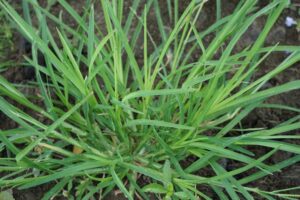Pgr Weed, In the world of cannabis cultivation, a growing trend has emerged that has sparked debates among growers, consumers, and health professionals: the use of Plant Growth Regulators (PGRs) in weed production. As the demand for high-quality cannabis continues to rise, many growers have turned to these substances to enhance growth and maximize yield. However, the implications of using PGRs in marijuana cultivation raise important questions about safety, legality, and the overall quality of the final product.
What are PGRs?
Plant Growth Regulators are synthetic or natural substances that influence plant growth and development. They can regulate various aspects of plant physiology, such as elongation, flowering, and fruiting. In the cannabis industry, PGRs are often used to promote compact growth, increase bud density, and improve appearance, leading to more visually appealing products. Common PGRs include paclobutrazol, daminozide, and chlormequat chloride.
The Benefits of Using PGRs
- Enhanced Growth Control: PGRs allow growers to manipulate the growth patterns of their plants, leading to shorter, bushier plants that can fit more easily into indoor grow spaces. This can be particularly advantageous for commercial growers looking to maximize their yields in limited areas.
- Increased Bud Density: Many cultivators report that the use of PGRs leads to denser, heavier buds, which can enhance the overall marketability of the product. This is appealing to both growers and consumers seeking potent strains.
- Uniformity: PGRs can promote uniform growth rates among plants, ensuring that all plants mature at similar times. This consistency is important for commercial growers who aim to harvest their crops at optimal times for market demand.
The Controversy Surrounding PGR Weed
Despite the potential benefits, the use of PGRs in cannabis cultivation is highly controversial for several reasons:
- Health Risks: One of the primary concerns regarding PGRs is their potential impact on human health. Some studies have suggested that certain PGRs can leave harmful residues on the final product, which may pose risks when consumed. This has raised alarm bells among consumers and health experts, especially given the increasing popularity of cannabis edibles and concentrates.
- Legal and Regulatory Issues: The legality of using PGRs varies by region, with some areas imposing strict regulations on their use in food crops, including cannabis. Growers using PGRs may face legal consequences if they do not adhere to local regulations, putting their businesses at risk.
- Impact on Quality: Many cannabis connoisseurs argue that the use of PGRs can compromise the quality of the weed. While PGRs may enhance appearance and yield, they can also affect the plant’s cannabinoid and terpene profiles, potentially diminishing the flavor and potency that many consumers seek.
Making Informed Choices
For consumers, navigating the world of cannabis can be daunting, especially when it comes to understanding what is in the products they purchase. To make informed choices about PGR weed, consider the following tips:
- Research Brands: Look for reputable cannabis brands that prioritize organic growing methods and are transparent about their cultivation practices. Many growers now advertise PGR-free products as a selling point.
- Ask Questions: Don’t hesitate to ask your local dispensary about the cultivation methods used for the cannabis they sell. Knowledgeable staff should be able to provide information about whether PGRs were used in production.
- Check Lab Reports: Many dispensaries provide lab testing results for their products, which can indicate the presence of residual PGRs or other chemicals. Look for products that have been tested and verified for safety.
Conclusion
The use of PGRs in cannabis cultivation presents a complex landscape of benefits and concerns. While these substances can enhance growth and yield, they also raise significant questions about health, safety, and the overall quality of the cannabis experience. As the industry continues to evolve, both growers and consumers must stay informed and prioritize quality to ensure a safe and enjoyable cannabis experience.
You Might Also Like These:



